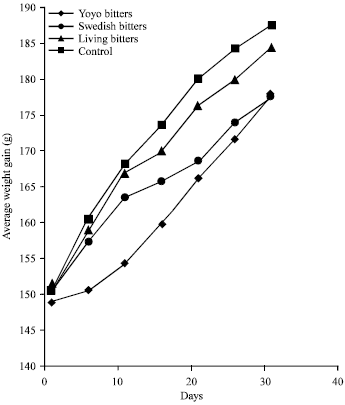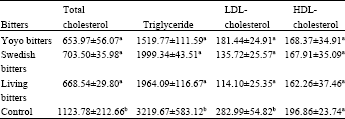Research Article
Effect of Bitters on the Body Weight, Lipid Profile, Catalase and Lipid Peroxidation in Experimental Animals
Bioresources Development Centre, National Biotechnology Development Agency, Ogbomosho, Nigeria
R.M. Sunday
Department of Pharmacology, Faculty of Pharmacy, Obafemi Awolowo University, Ile-Ife, Nigeria
T. Olowokere
Bioresources Development Centre, National Biotechnology Development Agency, Ogbomosho, Nigeria
F.A. Kareem
Laboratory of Science, Department of Technology, School of Pure and Applied Sciences, Gateway ICT Polytechnic, Saapade, Nigeria
F. Osanaiye
Bioresources Development Centre, National Biotechnology Development Agency, Ogbomosho, Nigeria













